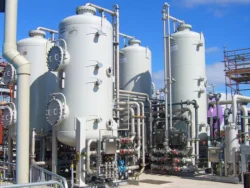
organosilica water purification
The demand for clean and safe drinking water is increasing as population growth and industrialization continue to put a strain on our natural water sources. Water pollution is a major global issue, with contaminants such as heavy metals, pesticides, and bacteria posing a serious threat to the health of humans and the environment. As a result, there is a growing need for efficient and cost-effective water purification technologies that can effectively remove these contaminants and provide access to clean drinking water for all.
Organosilica water purification is a promising technology that has gained attention in recent years for its ability to remove a wide range of contaminants from water. Organosilica materials are a class of hybrid organic-inorganic materials that combine the properties of both organic polymers and inorganic silica. These materials have a high surface area and can be tailored to have specific properties, such as high adsorption capacity and selectivity towards certain contaminants.
One of the most common organosilica materials used in water purification is mesoporous silica, which has a highly ordered pore structure and a large surface area. These properties make mesoporous silica an ideal material for adsorbing pollutants from water, such as heavy metals, organic compounds, and bacteria. The surface chemistry of mesoporous silica can be modified to enhance its adsorption properties towards specific pollutants, making it a versatile material for water purification applications.
Organosilica materials can be used in various water purification processes, including adsorption, filtration, and membrane separation. In adsorption processes, organosilica materials are used as adsorbents to remove contaminants from water by trapping them within their pore structures. The high surface area and pore size distribution of organosilica materials make them highly effective adsorbents for a wide range of pollutants, including heavy metals, pesticides, and organic compounds.
In filtration processes, organosilica materials can be used as filter media to physically remove contaminants from water. The porous structure of organosilica materials allows water to pass through while trapping contaminants on the surface or within the pores of the material. This process is particularly effective for removing suspended solids and bacteria from water, providing a simple and cost-effective method for water purification.
Membrane separation is another water purification process that can be enhanced by the use of organosilica materials. Organosilica membranes can be fabricated with specific pore sizes and surface chemistries to selectively remove contaminants from water based on their size and chemical properties. These membranes can be used in processes such as ultrafiltration and nanofiltration to remove pollutants at the molecular level, providing a high level of water purity.
Organosilica water purification technology offers several advantages over traditional water purification methods. These materials are highly stable and resistant to fouling, making them ideal for long-term use in water treatment systems. Organosilica materials are also cost-effective and easily scalable, making them suitable for large-scale water purification applications.
In addition to their effectiveness in removing contaminants from water, organosilica materials also have environmental benefits. These materials are non-toxic and biocompatible, making them safe for use in drinking water purification systems. Organosilica materials can also be regenerated and reused multiple times, reducing the amount of waste generated by water treatment processes.
Organosilica water purification technology has already been implemented in various applications around the world. In China, organosilica materials have been used to remove heavy metals from industrial wastewater, providing a sustainable solution for water pollution control. In the United States, organosilica membranes have been used in water treatment plants to remove pharmaceuticals and other emerging contaminants from drinking water.
Despite the many benefits of organosilica water purification technology, there are still challenges that need to be addressed to fully realize its potential. The design and synthesis of organosilica materials with specific properties for water purification applications require expertise in materials science and chemistry. The scalability of organosilica water purification systems also needs to be optimized to meet the growing demand for clean drinking water.
Overall, organosilica water purification technology shows great promise for improving access to clean and safe drinking water for communities around the world. With further research and development, organosilica materials could revolutionize the way we treat water and address the global water crisis. As we continue to face water scarcity and contamination challenges, organosilica water purification technology offers a sustainable and effective solution for ensuring a safe and reliable water supply for all.
